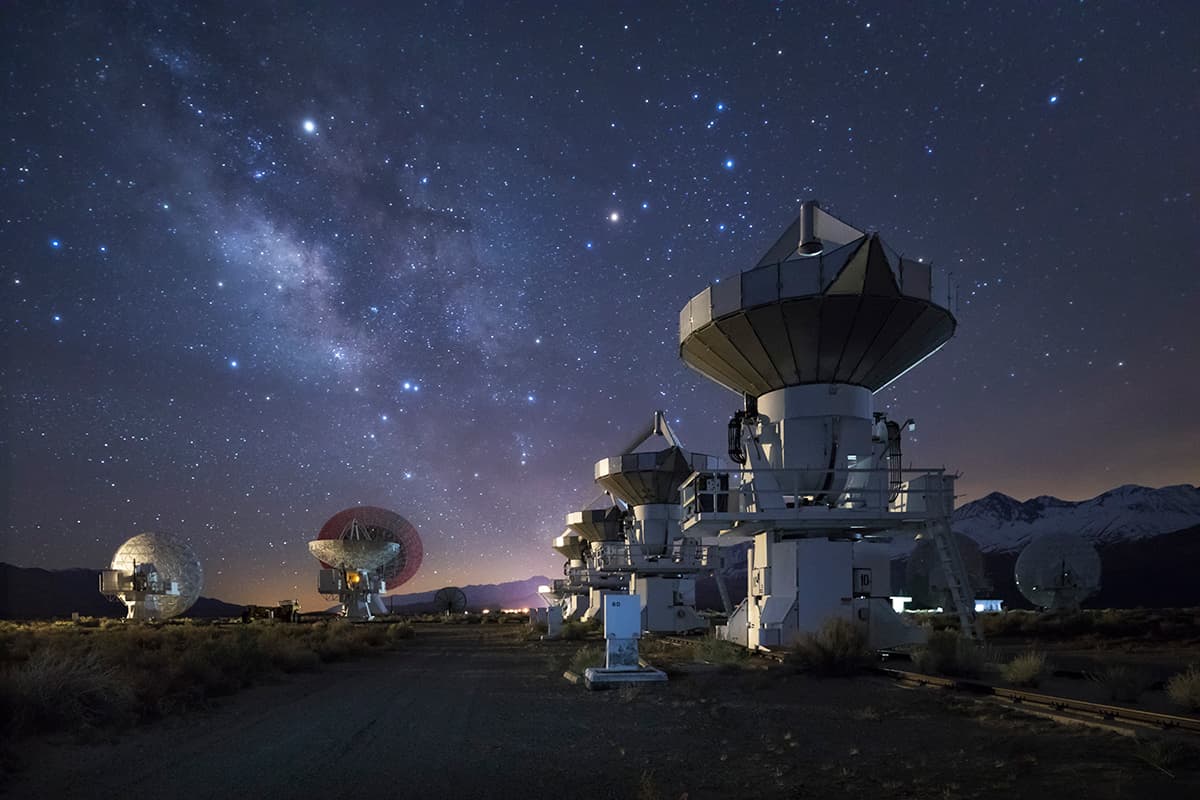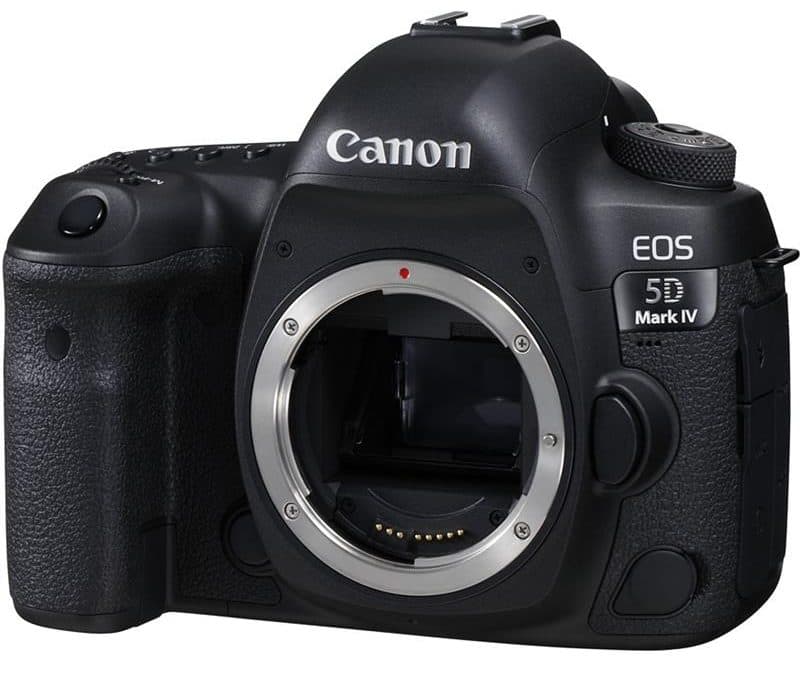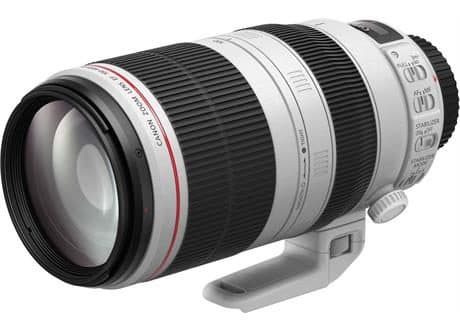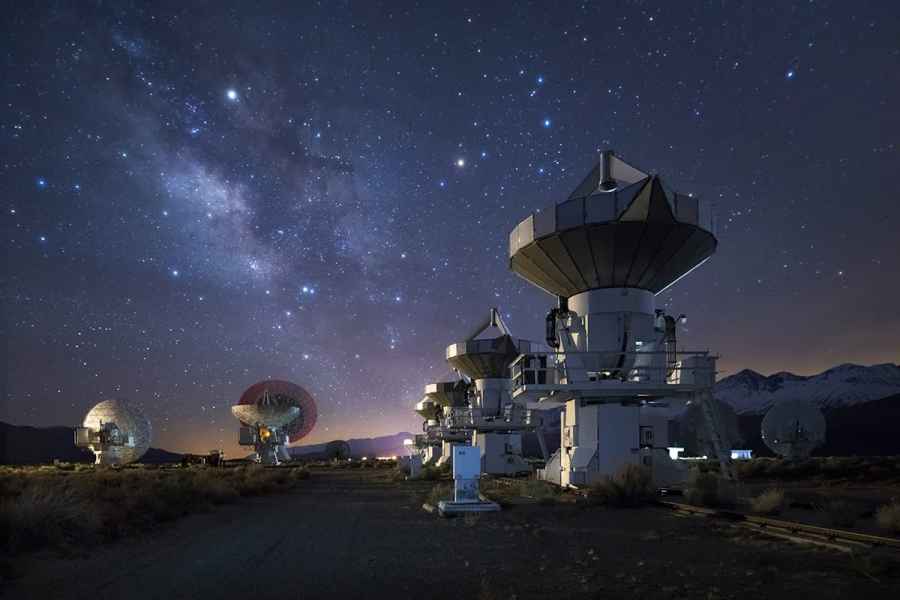
Radio telescopes, Sierra Nevada
I was on a trip to California’s Sierra Nevada, and one evening, while descending from the ancient bristlecone pine forest, I spotted this radio telescope. After seeking permission, I was given clearance to photograph it over two nights.
Crucial to the success of this image is the use of the Canon TS-E 24mm tilt-shift lens, which helped correctly convey the verticals in the buildings. This lens has such a large image circle, that when you raise it to correct the verticals, the image stays sharp right to the edges of the frame. The foreground-to-background sharpness is thanks to pulling the focus slightly back from infinity, which is something that increases depth of field.
When shooting at night, the maximum ISO you’d want to go to with the Canon EOS 5D Mark IV is ISO 6,400. You could go up to 25,600 during the day if you were shooting, say, very fast action, but it’s a different ballgame with night photography. Five years ago, I wouldn’t have been able to go beyond ISO 800 at night, so this is a huge improvement for me.
Timing is critical when photographing something like the Milky Way, as the most successful images will be achieved in the period just before astronomical twilight ends. You can’t really see it with the naked eye, but it’s around two to three hours before sunrise. At this time of night, you’ll be able to depict the Milky Way very clearly, and there will be a soft magenta or dark blue tone in the sky. This is the best time to strike, as it’s far more evocative.
Obviously, in this image there’s some ambient light, too. The structures are lit by a building about 100m away, in which the lights had been left on for me. In addition, I carried out some painting with light. A bright light would have been too much, so I used a torch in which the battery was almost flat. An alternative would have been to cover it with a handkerchief or lens cloth. As the exposure was 25 seconds long, it gave me time to run into the scene, use the torch and run out again without being recorded.
The EOS 5D Mark IV has hardly any colour noise at all. Even so, it’s extremely important to preserve as much detail as possible when removing noise in Lightroom. I often work on a separate layer of noise reduction for the sky, then have another layer where I preserve as much as I can in the foreground, blending the two layers together afterwards.
Top tip
It is very important to understand the limitation of your camera’s ISO capabilities. Test its performance by doing a local night shoot. Begin by setting the camera to a wide aperture (f/2.8 is perfect) and push the ISO one whole step at a time, to ISO 3200, then 6400. The EOS 5D Mark IV I used in this image works superbly up to 6400, but from here on, noise begins to overwhelm the benefits. Remember, cameras perform even better in good light, so don’t test your ISO limits in the daytime.
My favourite kit
Canon EOS 5D Mark IV: This is an absolute leader in its field. I did have its versatility before, but it was spread across two different cameras. Now I have everything I need in one camera body. The files are extraordinarily good and the colour is just magical.

Canon EF 100-400mm f/4.5-5.6L IS II USM: This is the long-range lens I always wanted. Used with a 1.4x converter, it reaches 560mm, or attach it to an EOS M5 and use the same converter to get the equivalent to an 892mm focal length. I can get everything from 100mm to nearly 900mm with one lens and two cameras.

Canon TS-E 24mm f/3.5L II: I have owned this lens since 2008 and I use it so much, I’ve had to have it rebuilt. Whether I’m shooting landscapes, coastal work, architecture or stitched panoramas, it’s my number-one lens. Its sharpness is exemplary and I’m still amazed by what it can do.

AP was at the Park Cameras Imaging Festival this year, taking it all in. We caught up with plenty of brand ambassadors, including David. Check out our video below.
https://link.brightcove.com/services/player/?bctid=5519213717001
To see the rest of our coverage from this fantastic event, click here.
About David
Landscape, travel and architectural photographer David Clapp is regularly commissioned to produce images for the likes of AA Travel and Visit Britain. He’s a Canon ambassador, and also runs workshops, both under his own name and on behalf of Light & Land. www.davidclapp.co.uk







